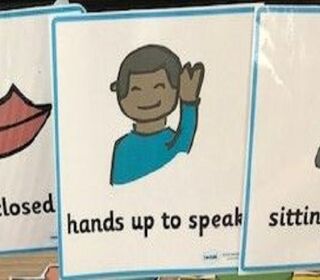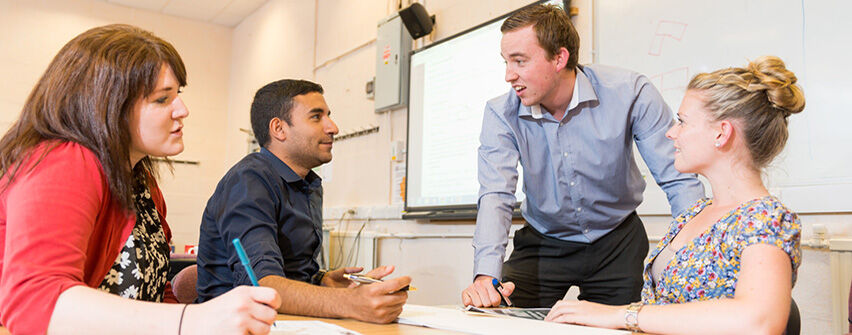
Blog

Starting school is a significant life event and supporting this process has always been a part of my professional practice. For 25 years, I taught in Reception and Early Years settings working with children and parents, some of whom found this start to school stressful or even distressing. My doctoral research sought to understand the lived experiences of six children starting school, their parents, their Early Years educators and their Reception teaching staff. Focusing on children’s physical, embodied experiences, I explored the question: ‘How do children experience the transition into school in the context of their families and educators?’
Framing the research theoretically
I began with Bronfenbrenner and Morris’ (2006) mature bioecological systems model of development because it focuses on the complexity of interactions between the child and other people and environments, directly and indirectly involved in the transition. However, I found that it did not help to illuminate or interpret significant aspects of my findings, which led me to integrate other theorists into this framework.
Bernstein (2000) enabled the exploration of the asymmetrical power relations embedded in school: within the mesosystem of school, early years settings, and home; as well as within the microsystem of the classroom between teacher-parent and teacher-child. School decides on the transition programme, in terms of visits to settings, visits into school, and information evenings for parents. Teachers control parents’ access to the classroom and the timing and content of the induction process for children.
The work of Foucault (1977) was also integrated into the framework to examine the impact of these power relations on children’s bodies. Schools are social institutions, sites where disciplinary practices act on the body and become visible as individuals learn to embody the identity of a school child. Disciplinary practices control the body in relation to movement, space and time. Close surveillance and correction are applied until the individual internalises and self-regulates these practices: ‘discipline produces subjected and practised bodies, ‘docile’ bodies’’ (1977: 138).
The final theoretical integration was necessary to explain the significance of the material world for children. I turned to the concepts and language of new materialism (Lupton, 2019; Lenz-Taguchi, 2010) which address non-human elements of human experience including smooth and striated spaces (Deleuze and Guattari, 1987) which individuals encounter. Paying attention to everyday materialities offered a deeper understanding of children’s embodied experience of starting school.
Participants and methods
I focused on six children starting in the Reception class where I was a part time teacher. I actively carved out space for the researcher role wearing my ‘finding out clothes’ on days when I was there to research. I used participatory approaches to explore children’s perspectives:
- Participant observations in their early years settings before starting school then in school once they had begun.
- Draw and talk sessions and photo tours using iPads where children drew and took photos of anything they wanted to tell me about school.
- Interviews of key adults: their key early years educator, receiving teaching staff, and parents.
Findings
Children experienced the school surroundings in a vividly multi-sensory way from smelling flowers to coping with new sounds such as bells and hand dryers; from the feel of the hall floor as they sat for assembly to the sensation of wearing a tie ‘This thing is stranglin’ me.’
Objects were significant to their experiences; for example chairs carried meanings about when and where they could sit in relation to adults and deciphering these messages was part of learning about the culture of school and their position within it. Some objects such as taps, toilets, and hand wash were disempowering because of their relative size and scale; children were expected to adapt, rather than objects or the environment being adapted to them.
Central to their experience of starting school was adapting to the behavioural expectations of the classroom including exactly how and when to sit, speak, move and eat. Children’s bodies were ‘schooled’ through surveillance by adults to ensure children complied; this was especially intense in key striated spaces- at carpet time and in the hall. Children found it particularly challenging to control their bodies when sitting for prolonged periods and to contain physical urges such as needing the toilet.
Children’s bodies reacted to these physical demands: discomfort, hunger and fatigue were of particular note. Parents reported an increased stress in trying to meet children’s physical needs at home as children were so tired it was a struggle to eat in the evening before falling asleep - homework added to this strain.
All adults emphasised the need for children to be made ready before the start to school and demonstrate the behaviours of readiness once in school. Descriptions of what adults meant by ‘school ready’ were about children’s bodies being able to manage toileting and clothing and to control their bodies to meet the requirements of the classroom - for their bodies to be still so that they were ready to receive the teaching.
Implications of findings
The findings impacted my practice as I recognised the importance of the material world and the physical demands placed on children as they start school.
Questions I asked myself in relation to sensory experiences were:
- Are any sounds, smells, textures, tastes proving challenging for children?
- Can any challenging sensations be altered to improve the experience of the environment for children?
- Are children encouraged to express how they feel about their sensory experiences in the new environment?
Questions I asked myself in relation to objects were:
- What messages are objects conveying to children? Are these messages positive?
- Are any objects disempowering children? Could they be changed to increase children’s autonomy?
- Are there objects specific to school that could be explained to children?
- Are children encouraged to express how they feel about the objects they experience in school?
While I was able to navigate some changes to the physical demands children encountered at the start of their school life, some need to be made at policy level.
Changing uniform requirements to clothes that promote free movement and are easy to manage when toileting or changing would be empowering and help children gain autonomy over their own bodies.
Change is also needed to reduce the emphasis on formal teaching and assessment in Reception which results from baseline assessments, systematic synthetic phonics teaching from the start and setting targets for the proportion of children who need to achieve GLD (Good Level of Development). Policies that protect Reception classes as truly early years spaces would promote practices within the classroom to better meet the physical, emotional and educational needs of these four-year-olds.
References
Bernstein, B. (2000) Pedagogy, symbolic control, and identity: theory, research, critique, London, Rowman & Littlefield Publishers.
Bronfenbrenner, U. and Morris, P. A. (2006) ‘The Bioecological Model of Human Development.’ in Lerner, R.M. (ed) Handbook of Child Psychology, Vol. 1, Theoretical Models of Human Development, New York, Wiley, pp.793-828.
Deleuze, G. and Guattari, F. (1987) A thousand plateaus: capitalism and schizophrenia, London, Bloomsbury Academic.
Foucault, M. (1977) Discipline & Punish: The Birth of the Prison, London, Penguin Books Ltd.
Lenz Taguchi, H. (2010) Going beyond the theory/ practice divide in early childhood education: Introducing an intra-active pedagogy, Abingdon, Routledge.
Lupton, D. (2019) ‘Things that matter’: poetic inquiry and more-than-human health literacy’, Qualitative Research in Sport, Exercise and Health, pp.267-282.
